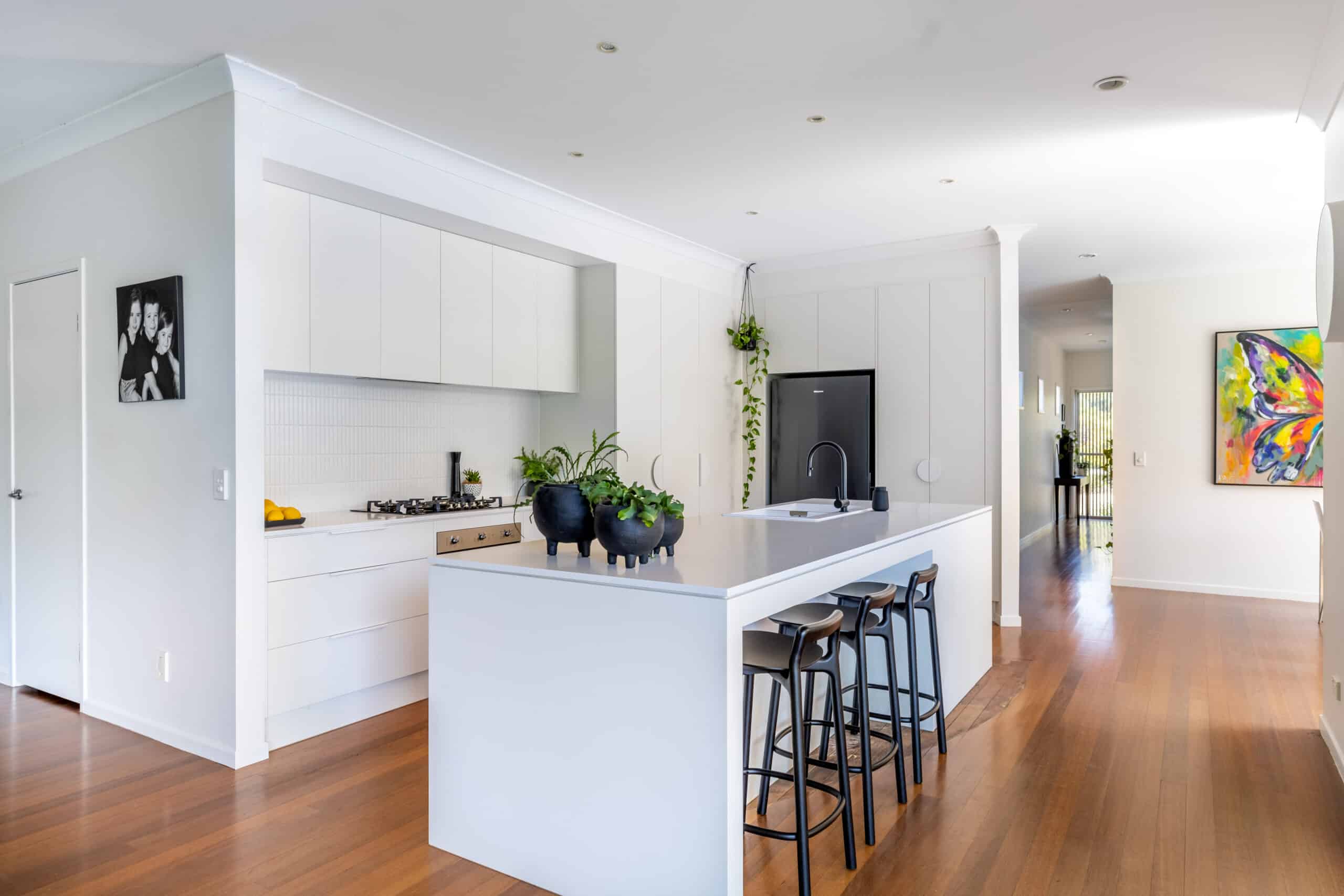It can feel like the world opens up vastly as soon as you say ‘modern’. Anything new feels modern, right? Let’s take a look at ways to help narrow in on what modern means in kitchen design so you can feel confident in your choices.
What does modern mean, exactly?
Generally speaking, a modern kitchen is characterized by streamlined surfaces, open spaces and simple features. Modern design originally was born of a historical design movement in the mid-20th century, adhering to strict guidelines that remain unchangingly simplistic. Think horizontal lines, frameless cabinet doors and monochromatic palettes. The term “contemporary”, however, is often incorrectly used interchangeably with the term “modern” and rather refers to “current trends” which change with the times whereas modern adheres to rules.
We will focus on the true meaning of modern kitchen design in this article, to explore how the rules of modern design may work for you. By the end of this article, you’ll understand how to design your own modern kitchen, or you’ll perhaps realise that modern is not for you and perhaps you have something more contemporary or traditional in mind.
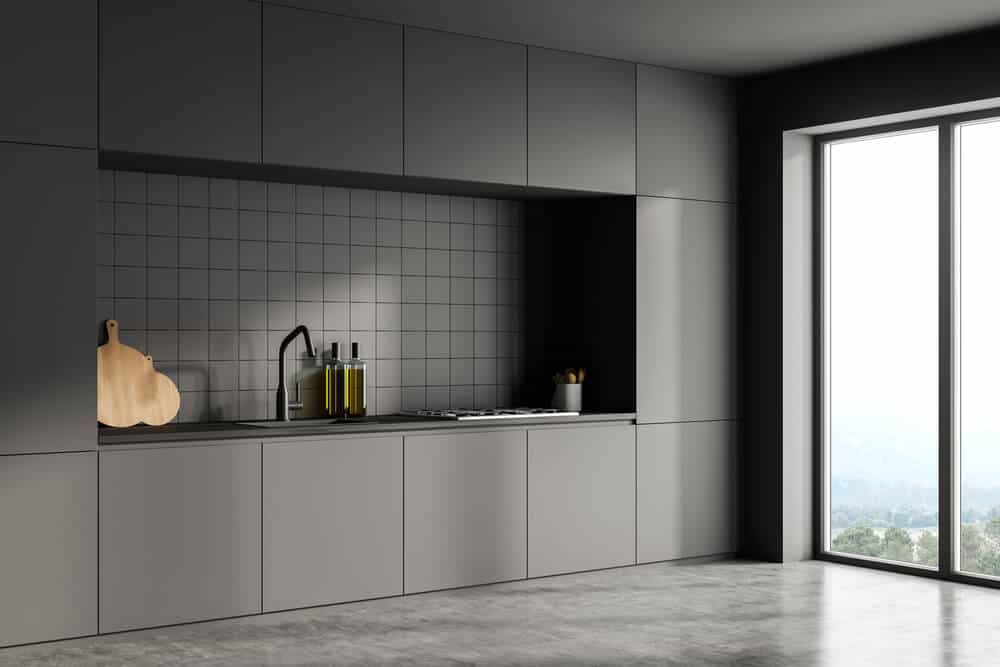
1. Layout - How to determine a modern kitchen layout
It’s all about maximizing space with open concepts, long countertops, and clever storage to hide all the clutter. Open floor plans typically stretch the entire length of the kitchen to achieve an uninterrupted and seamless feel. Creating a modern layout is essentially creating effortless access. Low maintenance, easy to clean, long straight lines and flat surfaces, doesn’t it just make you want to whip through dinner and have the dishwasher on before bed? Modern design saves time and space, so the first thing in designing your modern kitchen would be the layout that best maximizes the current space. Modern layouts can work in many spaces from compact apartments to lofty warehouses, so choose the most suitable shape for the space you’re working with. Which of these basic shapes would fit in the space you have?

The One Wall Kitchen
Everything along one wall
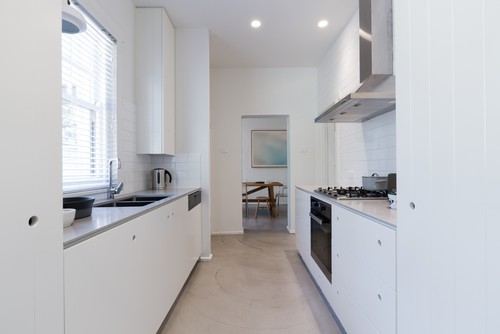
The Galley Kitchen
Parallel cabinets with a walkway between
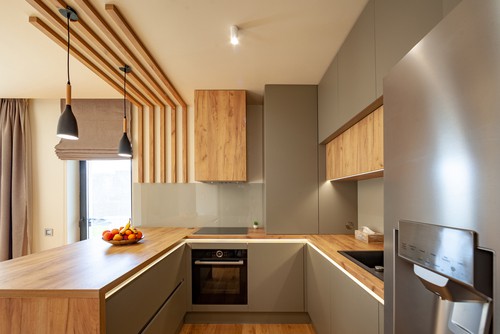
The L-Shaped Kitchen
Two adjoining, perpendicular walls form an L-shape
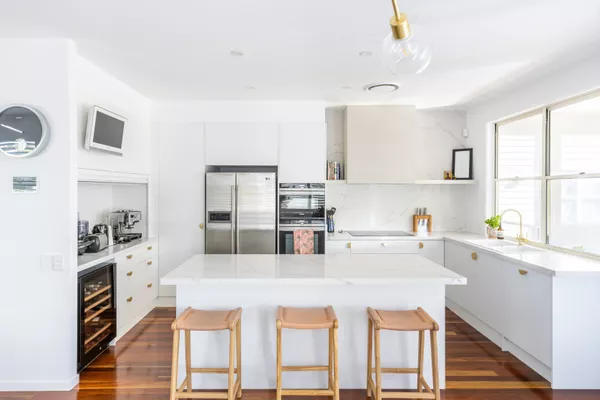
The U-Shaped Kitchen
Along three walls with an opening in the middle
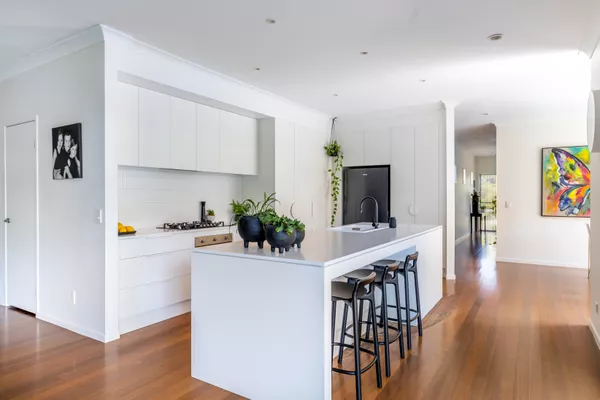
The Island Kitchen
Featured around a free-standing kitchen island bench
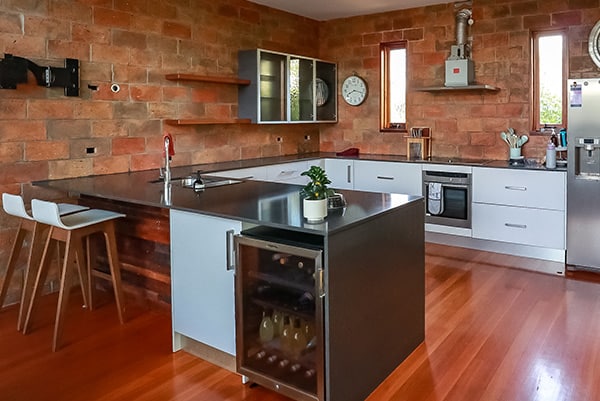
The Peninsula Kitchen
An extension of the kitchen bench
2. Surfaces - How to choose modern kitchen benchtops and cabinets
Once you have your layout you can start thinking about surfaces. Modern kitchen cabinet doors are typically flat panels that lean through the expansiveness of the space. Modern kitchens do not introduce detail through the shape of the cabinet doors, such as a Hamptons kitchen would require a shaker door (with a thick profile around the edge). For now, for the sake of the rules of modern kitchen design, let’s confirm that the doors are flat. We have a bit of room to move with colour and texture which we’ll get to soon.
The top 5 materials that modern benchtops are made out of are;
1. Stone
Engineered stone made of quartz composite by well-known companies such as Caesarstone and Smart Stone etc. Certainly, the most popular due to its durability, being heat, stain, and scratch resistant. Available in a wide range of choices from marbled and textured to smooth and plain, generally in either 20mm or 40mm.
Both sizes look fantastic in a modern kitchen, it just comes down to taste and obviously the thicker bench increases the cost.
2. Porcelain
Fairly new in the industry, its long-term durability is yet to be thoroughly tested, but so far, we can say that due to low porosity, porcelain is very resistant to stains and is expected to be as hardy as a floor tile. Typically, less than the 20-40mm thickness of the engineered stone benchtops, Porcelain is available from 6mm and 12mm. A great slimline option in a modern design.
3. Granite
Natural stone is comparatively much more expensive than it’s engineered alternative. Whilst it is certainly durable, heat and scratch resistant, it is naturally porous which makes it susceptible to staining. Upon installation, granite is sealed to help mitigate this, and daily cleaning can help make this an option for you if the aesthetic of natural stone is your statement. Remembering, however, that engineered stone is engineered to look natural, you can usually find an engineered equivalent for less.
4. Stainless Steel
An obvious choice for practical benefits, given that it is of industrial grade, as well as its aesthetic appeal in a sleek, modern kitchen. One thing to consider is it can be dented and scratched over time which diminishes its sleekness. Stainless steel can easily give off an industrial vibe too, which may not be what you’re looking for, however can fit within the rules of modern design.
5. Laminate
Laminates have come a long way in offering cheaper access to a wide range of finishes and colours. Not as resistant to heat and scratching as any other option on the list. A good look for a low price.
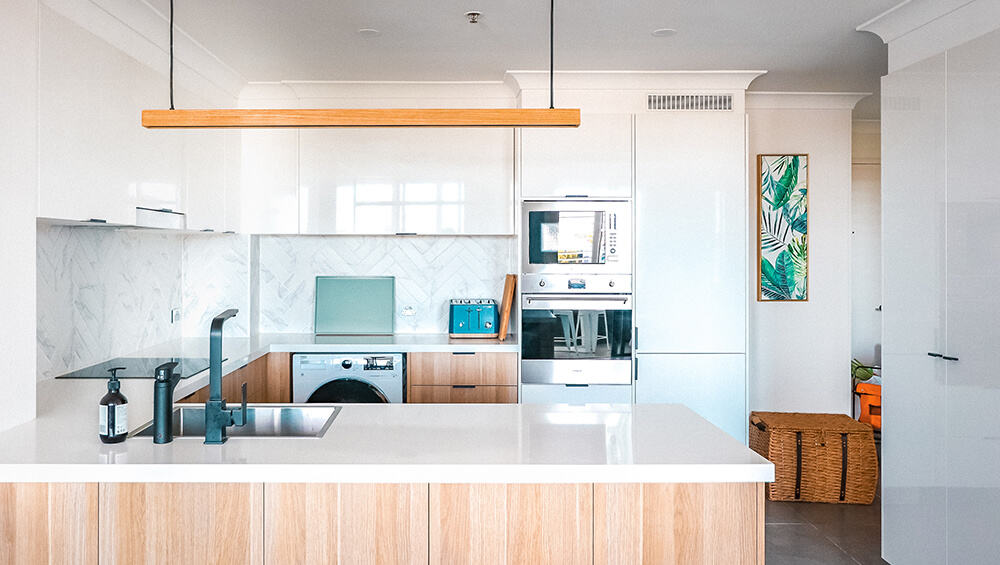
3. Colours and Textures - How to choose modern kitchen colours and textures
Colours and textures
Now we can put together a colour palette. Whilst we always have an all-white kitchen to fall back on, there may be other designs you’re inspired by, and what the space best lends itself to. For example, is there a lot of natural light or a big window nearby? Is it dark and needing all the light it can get? What colour are the floors and walls?
Warm and cool tones
If the walls and floors have warmth to them (yellows and oranges through the wood, terracotta tiles etc) or are instead cool (blue and grey undertones etc) it may be best to keep that in mind when choosing the other colours so they tie in together.
Note: if you have a warm-toned space but want a cool-toned kitchen, you can always mindfully place some warm elements in the decor (chairs, light pendants), the handles, the overheads, or an open wooden shelf that speaks to the surroundings. We have options, just something to keep in mind. For now, is your space warm or cool?
Light and dark
If there is not much natural light in the space, it can be useful to choose white and bright colours as they tend to reflect and amplify minimal light. It wouldn’t have to be white to be light, you could do a light pastel like a sage green with a satin sheen which will help with the reflectivity. If the space is more flexible with natural light, we can think about something deep and rich like a charcoal blue or matt black. Black tends to fall away and appear further back, so it can actually work quite well in a small space, if there is a window nearby. Now you know whether you need light and bright, or rich and dark.
Combinations
All White
White and Wood
White with Black Accents
Matt Black
Monochromatic
Splashbacks
Modern splashbacks are generally worked into the background as opposed to standing out as a vibrant feature. Statements tend to attract our attention which is not what we want to do in a modern kitchen. We want to remain uninterrupted. This doesn’t mean it has to be boring. It can be as grand as continuing your stone benchtop up the wall, or it can be a white tile, a smokey mirror, or lend itself to your monochromatic scheme. Essentially you want it to colour match either the benchtop, the cabinets, or the wall. Colour wise It’s going to go with what we are already working with. If you’re feeling your kitchen is too plain, this is a good time to introduce texture, like a kit kat tile.

All White
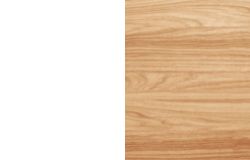
White & Wood
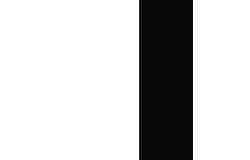
White with Black Accents

Matt Black

Monochromatic
4. Appliances - How to choose modern kitchen appliances
Design aside, modern appliances are perhaps the most modern aspect in any kitchen. Sleek and streamlined is the way to go here. In-built features like boiling water from tap reduce bench clutter. An integrated dishwasher and fridge (hidden in cabinetry) make them disappear. A flat induction cooktop ticks all the boxes of easy to look at and easy to clean. A minimalist range hood adds to the sleekness, and there are plenty of models available with the motor on the outside of the house for quiet, energy-efficient, and highest-powered extraction
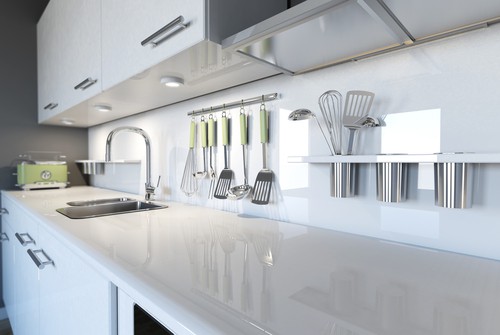
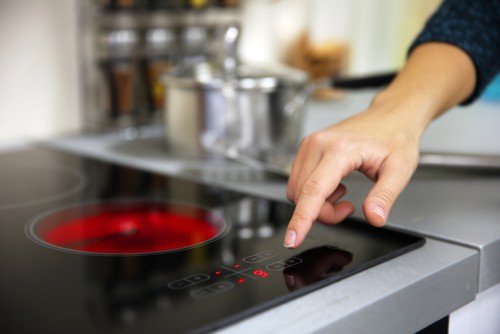
What’s next?
Now that you have an idea on what modern means in kitchen design, you should be able to determine if this feels right for you. If you noticed there were elements missing that are really important to you, be sure to check back on our following blog posts on Contemporary Kitchen Design, and Shaker Style Kitchens.
If you’d like our team to help you design your modern kitchen from determining the layout, through to helping advise on modern appliances, our designers are available to talk to you. Give us a call or visit one of our showrooms in Red Hill or Ipswich, and we can look at booking a complimentary showroom consultation for you.
